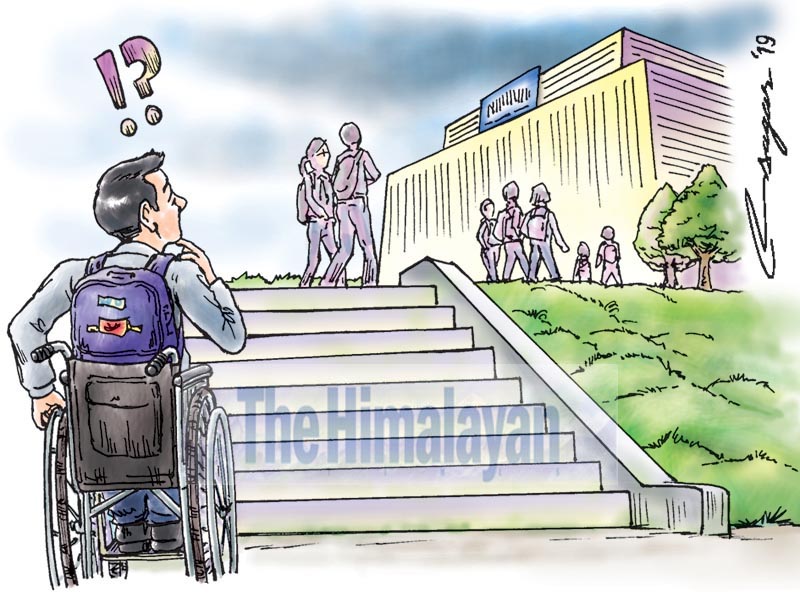Making schools inclusive: Multi-sectoral approach needed
This means working to improve the entire educational system, turning it into a system capable of fostering more child-centered learning while at the same time promoting tailor-made plans able to address the different needs of children. Building an inclusive school system implies benefits for all, not just a few
The International Day of Persons with Disabilities was marked a few weeks ago, and like many similar commemorations, these days come and go every year. On these days, the media is keen to emphasise the issue of the day, but then the news cycle kicks in, and our hopes and plans shared through articles and public speeches or declaration slowly fade away till the following year.
Over the past months, numerous opinions have been expressed about the future of learning, and how remote, including online education, can’t make up for what children lose from not being able to experience the real, face to face classroom.
The reality is that discussions on the pros and cons of virtual learning miss a very important point, the fact that there are millions of children who have been neglected of their rights to education not just during the pandemic but throughout their lives. I am not only talking about children with physical disabilities, unable to attend school due to lack of accessible infrastructure but am also thinking of those kids with developmental and intellectual disabilities.
Focussing on inclusive education should be one of the most pressing issues of this so-called “decade of actions” to achieve Agenda 2030.That’s why continued advocacy that is happening, even though it does not capture the headlines, is important.
Research is also essential, and recently Humanity and Inclusion, also known as Handicap International, came up with an important contribution that goes well beyond highlighting the gaps of the educational systems in the developing countries in terms of quality and inclusive education for all the children.
Entitled “Let’s break silos now! – Achieving disability-inclusive education in a post-COVID world”, the research proposes “system” solutions that governments and donors alike should really zero in on. Its groundbreaking recommendations could drastically improve, in terms of quality and inclusion, the educational systems of Nepal and many other nations facing similar challenges.
The report is based on gloomy and bleak assessments of the status of education during the lockdown for children with disabilities, all confirming that children with disabilities are the ones who missed out the most during this pandemic. The key message is that not only kids with disabilities would benefit from serious investments in inclusion but all the kids and all the families.
The problem is that there is no serious investment in education as the budgets normally allocated by governments for education are not nearly enough to meet the required challenges, and in this, Nepal is in emblematic disappointment.
Yet only allocating more resources would not be nearly enough, and it is here where the report proposes radical but doable solutions to redesign the governance, the manners and procedures in which national learning systems function.
If we really want to make schools inclusive, let’s simply follow on the title of this report, let’s demolish the fragmented way governments work to promote children’s wellbeing. We need to establish a whole government approach to education where stronger and more empowered education ministries can forge collaborations and partnerships with other relevant ministries that might have a mandate and the expertise to ensure that children with all types of disabilities can grow and thrive.
Think about it: it would be a real revolution if a system approach to children’s welfare is implemented through schools with classrooms turning to be not only places where children with all types of abilities and disabilities work together but also local hubs for children’s holistic development.
In practice, this implies bringing together services that otherwise would be administrated without coordination and often through overlapping offices.
The report makes the case for what it calls “coordinated multi sectoral approaches” that “are even more important to address the complexity and interdependency of children’s care, safety, wellbeing and education”.
To make it plain and clear, it’s exactly the lack of coordination that is impeding inclusive school education.
Trainings and capacity building for teachers are going to be paramount as well, and here the report suggests a dual track system, or a “twin-track” approach, that clearly makes a strong case for investing holistically on creating an entire inclusive learning system for all rather than supporting piecemeal measures for a few.
On the one hand, this means working to improve the entire educational system, turning it into a system capable of fostering more child-centered learning while at the same time promoting tailor-made plans able to address the different needs of children.
Once again, building an inclusive school system implies direct benefits for all, not just a few. The entire community would be the biggest winner of such a change in governance.
Pralhad Gairapipli, the Regional Communications Officer for Humanity & Inclusion, says, “The pandemic has further exacerbated inequalities in education of children with disabilities, being particularly affected by school closures, both in terms of learning and of accessing services that are often available through schools such as nutrition, social protection and psycho-social support.
“In times of crisis, coordinated multi-sectoral approaches are even more important to address the complexity and interdependency of children’s care, safety, wellbeing and education,” he adds.
Thus, one of the main takeaways from this report is the urgency to “accelerate action to radically transform education systems”.
Galimberti is co-founder of ENGAGE, an NGO partnering with youths with disabilities. simone_engage@yahoo. com






